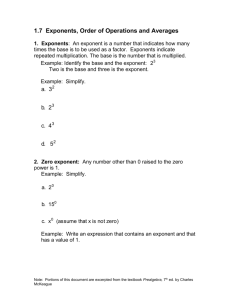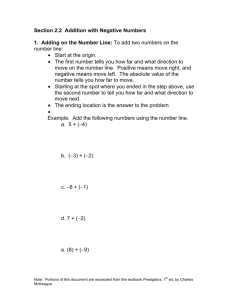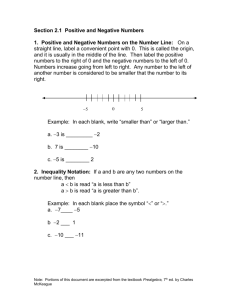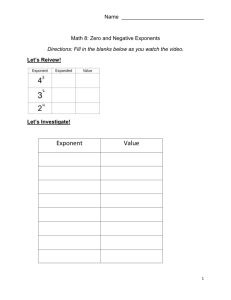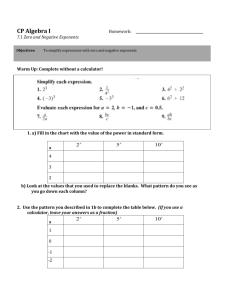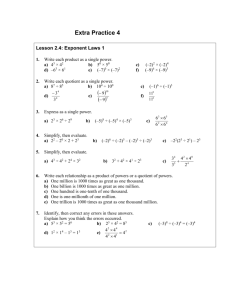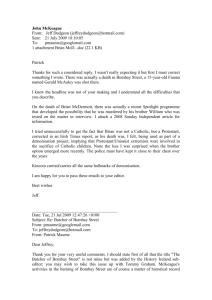translate symbols
advertisement
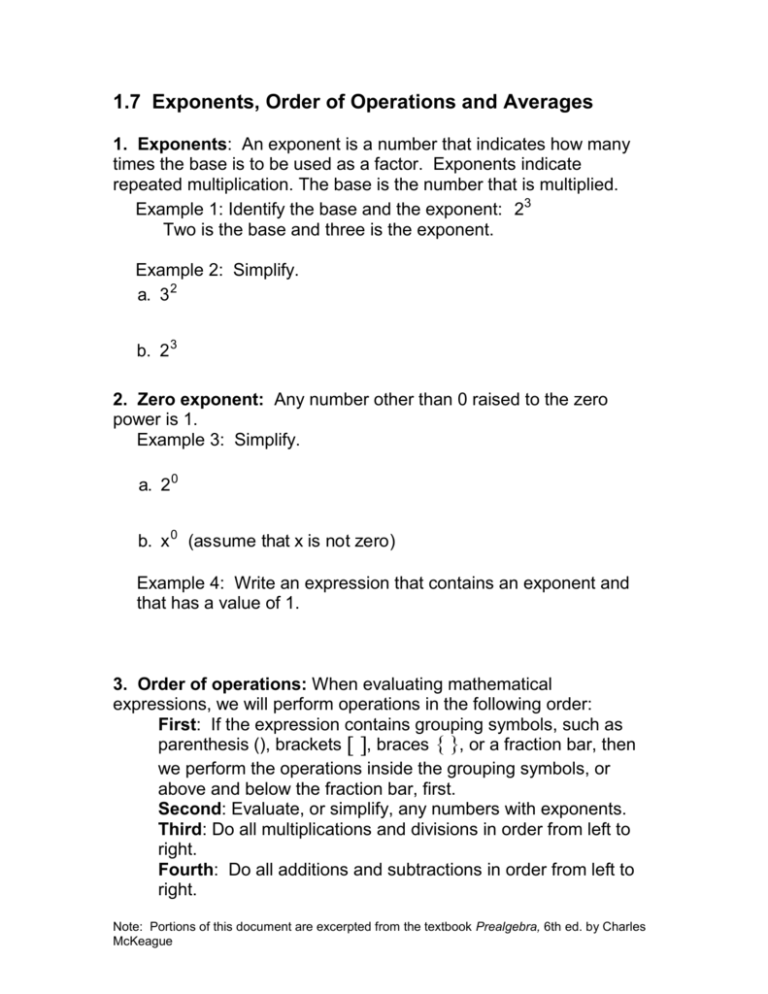
1.7 Exponents, Order of Operations and Averages 1. Exponents: An exponent is a number that indicates how many times the base is to be used as a factor. Exponents indicate repeated multiplication. The base is the number that is multiplied. Example 1: Identify the base and the exponent: 23 Two is the base and three is the exponent. Example 2: Simplify. a. 3 2 b. 2 3 2. Zero exponent: Any number other than 0 raised to the zero power is 1. Example 3: Simplify. a. 2 0 b. x 0 (assume that x is not zero) Example 4: Write an expression that contains an exponent and that has a value of 1. 3. Order of operations: When evaluating mathematical expressions, we will perform operations in the following order: First: If the expression contains grouping symbols, such as parenthesis (), brackets , braces , or a fraction bar, then we perform the operations inside the grouping symbols, or above and below the fraction bar, first. Second: Evaluate, or simplify, any numbers with exponents. Third: Do all multiplications and divisions in order from left to right. Fourth: Do all additions and subtractions in order from left to right. Note: Portions of this document are excerpted from the textbook Prealgebra, 6th ed. by Charles McKeague Example 5: Simplify. a. 3 + 2 4 2 (operations of addition, mult, and exponentiation) = 3 + 2 16 (do exponents first) = 3 + 32 (do multplication second) = 35 (do addition third) b. 2 3 + 48 3 c. 4 63 15 9 5 d. 32 2 17 32 4. Averages: There are three types of averages: the mean, the median and the mode. Mean: To find the mean for a set of numbers, we add all the numbers and then divide the sum by the number of numbers in the set. The mean is sometimes called the arithmetic mean. Median: To find the median for a set of numbers, we write the numbers in order from smallest to largest. If there is an odd number of numbers, the median is the middle number. If there is an even number of numbers, then the median is the mean of the two numbers in the middle. Mode: The mode for a set of numbers is the number that occurs most frequently, if there is a number that occurs more frequently than the others. Example 6: Find the mean, median and mode of the set of numbers: 35, 66, 75, 82, 21, 66, 90 Note: Portions of this document are excerpted from the textbook Prealgebra, 6th ed. by Charles McKeague 5. Range: The range of a set of numbers is the difference of the largest number and the smallest number. Example 7: Find the range of the given set of numbers: 10, 20, 50, 90, 100 6. Vocabulary: We will now translate into mathematical symbols English phrases that contain complicated expressions involving the terms sum, product, difference, and quotient. English phrase Math symbols sum of a and b two times the sum of a and b product of p and q product of p and the sum of a and b sum of p and the product of a and b difference of p and the sum of a and b sum of the product of a and b and the product of c and d Example 8: Translate each phrase into math symbols. a. The product of 4 and the sum of 3 and x b. The difference of 4 and the sum of 3 and x c. The sum of the product of 4 and 3 and the product of 2 and 5 d. Twice the product of 4 and x e. Twice the sum of 8 and 5 Note: Portions of this document are excerpted from the textbook Prealgebra, 6th ed. by Charles McKeague Practice Problems Simplify each of the following: a. 4 3 b. c. d. e. 52 90 2 35 52 4 10 22 f. 16 82 g. Find the mean, median, and mode of the set of numbers: 77, 87, 100, 65, 79, 87, 79, 85, 87, 95, 87. Round the mean to the nearest whole number. Translate each of the following phrases into mathematical symbols: h. The sum of 2 and the product of x and 4 i. The quotient of 7 and the sum of x and 4 j. The product of 12 and the difference of x and 4 Answers to Practice Problems a. 64 b. 25 c. 1 d. 17 e. 49 f. 4 g. mean is 84 median is 87 mode is 87 h. 2 + 4x 7 i. x4 j. 12(x – 4) Note: Portions of this document are excerpted from the textbook Prealgebra, 6th ed. by Charles McKeague
